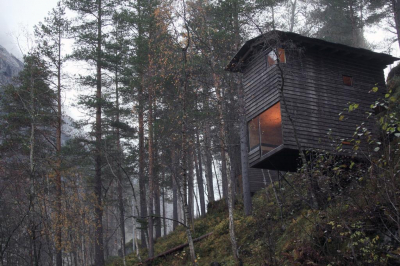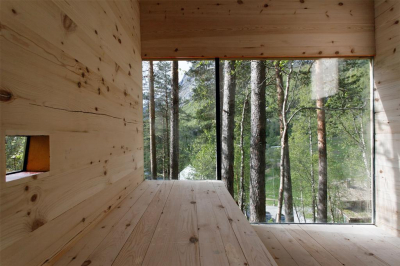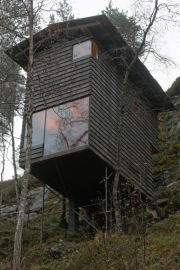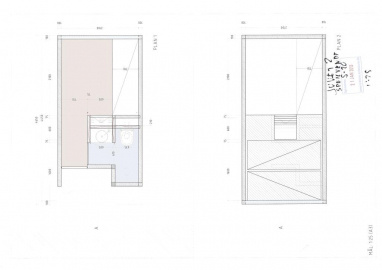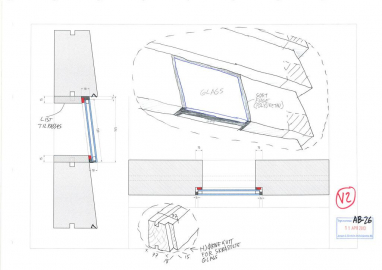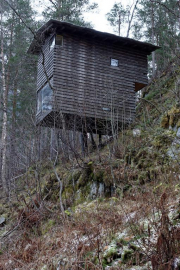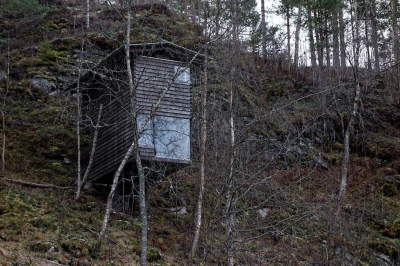Juvet Landscape Hotel - 2. phase
Two rooms, each 8 m².
The hotel has been built in two main phases. Seven rooms and a separate spa building were built in the first phase, from 2007 2010.
In the second phase (this projects), from 2012 2013, two more rooms have been added. The main approach is the same, although the two new rooms have been built with a more sophisticated technology, as a log house.
The site for the hotel is a nature reserve. After extensive negotiations with conservation authorities, permission was eventually granted for a plan allowing for a maximum of 28 rooms to be built, given that no dynamite was used or changing of the terrain was done.
The two new rooms
The new houses are built in a very steep terrain, basically as the old Norwegian Stabbur, a small separate log house for storing food, resting on small stone foundations in each corner. The whole room is lifted off the slope and rests on steel rods, diameter 30mm. This means that the whole box is lifted several meters above the ground at the most, and the feeling inside is that you are in a high and slightly dangerous place. The new rooms have a more minimal architectural language, constructed as log houses and with only one type of log, in the floor, walls and roof. This creates a kind of monotony in the expression that allows for a greater variation when it comes to other elements, such as the sizes of window etc.
The windows are set directly into the log structure, which is not a normal detail. This, however, helps underline the feeling of simplicity in these two rooms, as the number of different elements and materials used are very few. Each window has a special purpose, as it is a result of the most interesting views possible to get from the pillow positions in each of the rooms; to a water fall, to a river, to a mountain top, and so on. The doors are done without conventional hinges, because the height of the house will vary with around 40mm from February (lowest) to September (highest). The hinge is a circular pole which is rests in a hole in the floor, and with a corresponding hole in the roof, allowing for the different heights during the year. A specific geometric solution in the roof allows for mounting and demounting the door after the house has been erected. The door blade, a glass pane, is inserted into the circular vertical piece.
Todays concern for sustainability in architecture focuses almost excludingly on reduced energy consumption in production and operation. We think that conservation of topography is another aspect of sustainability which deserves attention. Standard building procedure requires the general destruction of the site to accommodate foundations and infrastructure before building can commence. Conserving the site is a way to respect the fact that nature precedes and most probably succeeds man.

